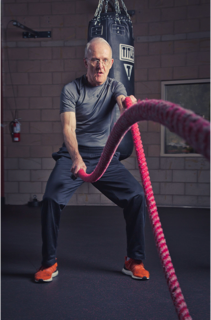There’s something about January that wets our appetite for self-improvement. Some 60 percent of us make New Year’s resolutions, researchers say, and the top three for 2019 are perennial favorites: eat healthier, exercise more, and lose weight. So far, so good. The trouble is, only a small fraction of us—about eight percent—actually accomplish the positive changes we set out to achieve. It’s no wonder the list of the most common resolutions doesn’t change much. It seems we keep making the same ones year after year!
What can we do to break the cycle of backsliding and increase our chances of success? As someone who pulled off the transformation from tired and weak to energetic and fit—and did it in my seventies—I’ve got some advice: think small.
While it’s tempting to view this point in the calendar as the beginning of a whole new you, that vision alone won’t carry you very far. Old habits don’t succumb to moments of resolve, and willpower tends to be unreliable.
This is not to say that setting goals and thinking long-term aren’t important; I believe that grounding is vital to any fitness program. But if you overreach, you’re setting yourself up for failure. Even if you start strong with an ambitious new regimen of healthy eating and regular exercise, sweeping lifestyle makeovers are devilishly difficult to sustain. Nor is it smart to jump into a strenuous exercise routine your body may not be ready for. That’s risking an injury that could sideline you for weeks or months, leaving you worse off than before.
If you truly want to become more fit, embrace the Japanese principle of kaizen—the pursuit of small, continuous improvements. As a foundational first step, start building the exercise habit. If you’ve been inactive for a while, ease into it with a program of regular walking and stretching. It’s fine to start with just a few minutes at a time. Keep at it, working up to five or six days a week, and you’ll be amazed how much better you look and feel in just a few weeks.
Or maybe your goal is to build strength, improve mobility, or work on balance. No matter what your aims, you’ll be more likely to accomplish them if you start from where you are and focus on the next step, adding exercise time or intensity in small increments. That way your interim goals will be attainable and each one will pave the way for the next.
To maximize your chances of success:
Make your goals concrete and measurable. Instead of saying “I’m going to exercise more,” say “I’m going to walk 30 minutes a day, three times a week and do two strength-training sessions.” Another kind of goal might be to do one proper push-up. Start by doing one or two from a kneeling position and go from there.
Harness the power of habit. Write your exercise sessions down on your calendar as appointments with yourself. Sign up for a Pilates, yoga, or circuit-training class, or make a regular date to work out with a buddy. Remember, consistency is one of the keys to any fitness program.
Focus on what you can do, not what you can’t. Don’t let your body type or your physical issues hold you back. Anyone who’s mobile can still become more fit. Just keep putting your best effort toward the next small increment of progress.
Keep it simple. You don’t need to glom onto the latest fitness fad or learn complicated exercises. A few basic movements and some attention to good form are all you really need.
Allow for setbacks. Don’t let a bad cold or a family emergency derail you. Simply pick up where you left off, scaling back a bit if need be, and keep going. You’ll quickly make up for lost time.
Make it fun. Sticking with a new regimen is a lot easier if it’s something you want to do. I personally really like the energy I get from working out in a gym, but that’s not everyone’s cup of tea. Maybe you’re someone who likes the camaraderie of a group class or prefers to be active outdoors. Get adventurous and explore some new options! The more you can find ways of moving that you enjoy, the greater your chances of reaching your goals.
As the saying goes, fitness isn’t a destination, it’s a way of life. That may be a truism, but it speaks to the nature of the challenge. Making the shift to a healthier, more active lifestyle is the one thing you can do to put the brakes on aging and make your coming years the best they can be. That kind of transformation isn’t quick or easy. It requires genuine commitment and some ongoing effort. But it doesn’t have to be daunting, either—not if you take a realistic approach, one manageable step at a time.























